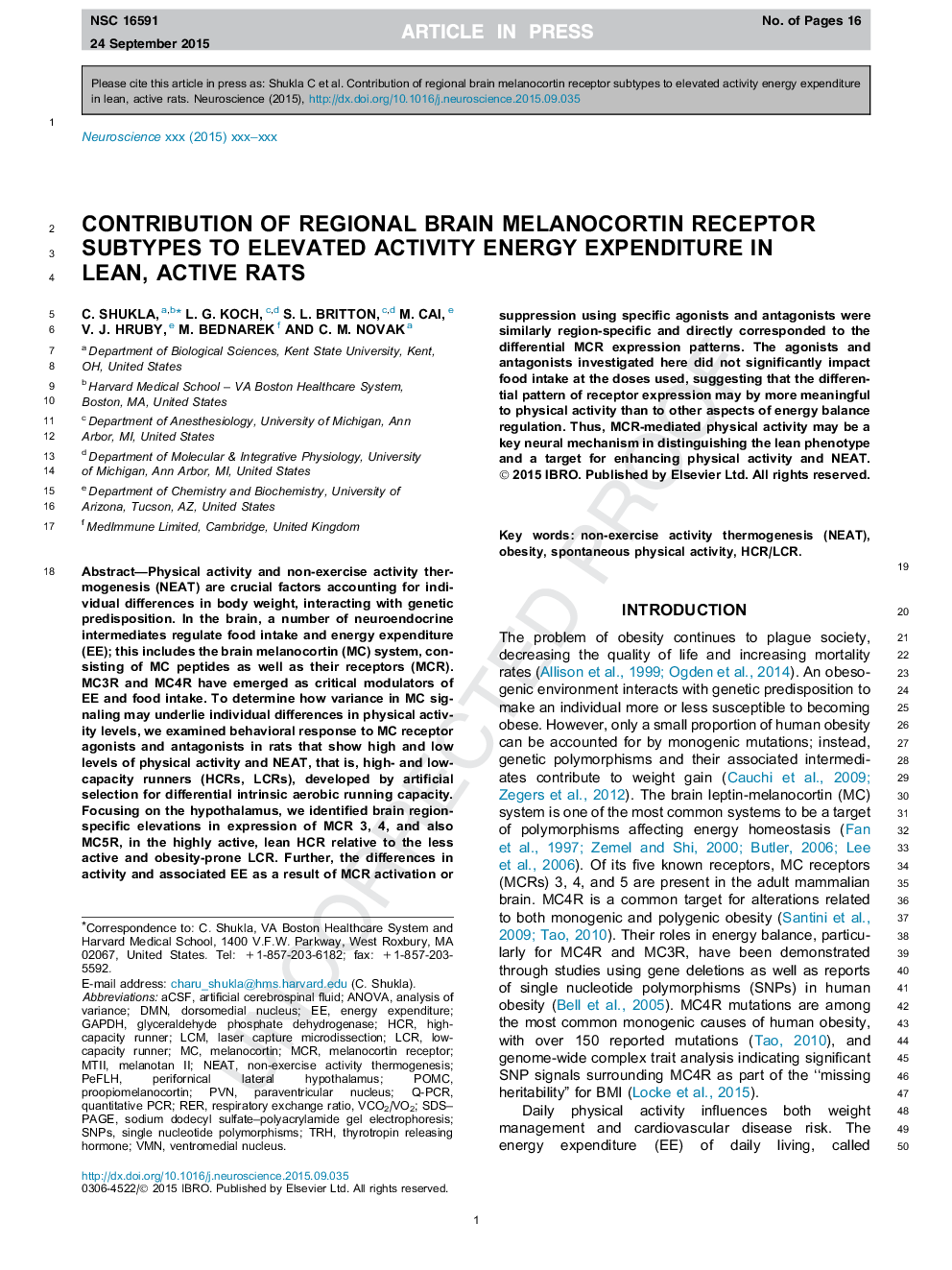| کد مقاله | کد نشریه | سال انتشار | مقاله انگلیسی | نسخه تمام متن |
|---|---|---|---|---|
| 6271542 | 1614766 | 2015 | 16 صفحه PDF | دانلود رایگان |
عنوان انگلیسی مقاله ISI
Contribution of regional brain melanocortin receptor subtypes to elevated activity energy expenditure in lean, active rats
ترجمه فارسی عنوان
نقش مؤلفه های گیرنده مولانکورتین مغز منطقه در افزایش هزینه های انرژی فعالیت در موش های فعال لاغر
دانلود مقاله + سفارش ترجمه
دانلود مقاله ISI انگلیسی
رایگان برای ایرانیان
کلمات کلیدی
VMNNon-exercise activity thermogenesis (NEAT)perifornical lateral hypothalamusNon-Exercise Activity ThermogenesisNEATRERLCRHCRDMNaCSFPOMCSNPsLCMGAPDHMCRQuantitative PCR - PCR کمیq-PCR - Q-PCRSDS–PAGE - SDS-PAGEsodium dodecyl sulfate–polyacrylamide gel electrophoresis - الکتروفورز ژل دوده سولفات سدیم پلی آکریل آمیدtrh - بازارanalysis of variance - تحلیل واریانسANOVA - تحلیل واریانس Analysis of varianceMTII - سهSpontaneous physical activity - فعالیت بدنی خود به خودیlaser capture microdissection - لیزر ضبط میکرو دیسکسیونPVN - مالیات بر ارزش افزودهartificial cerebrospinal fluid - مایع مغزی نخاعی مصنوعیObesity - مرض چاقیMelanotan II - ملانوتان دومmelanocortin - ملانوکورتینEnergy expenditure - هزینه انرژیdorsomedial nucleus - هسته dorsomedialVentromedial nucleus - هسته Ventromedialparaventricular nucleus - هسته پروژسترویکThyrotropin releasing hormone - هورمون آزاد کننده Thyrotropinproopiomelanocortin - پروپیوملانوکورتینSingle nucleotide polymorphisms - پلیمورفیسم تک نوکلئوتیدیGlyceraldehyde phosphate dehydrogenase - گلیسرالیدید فسفات دهیدروژنازmelanocortin receptor - گیرنده ملانوکورتین
موضوعات مرتبط
علوم زیستی و بیوفناوری
علم عصب شناسی
علوم اعصاب (عمومی)
چکیده انگلیسی
Physical activity and non-exercise activity thermogenesis (NEAT) are crucial factors accounting for individual differences in body weight, interacting with genetic predisposition. In the brain, a number of neuroendocrine intermediates regulate food intake and energy expenditure (EE); this includes the brain melanocortin (MC) system, consisting of MC peptides as well as their receptors (MCR). MC3R and MC4R have emerged as critical modulators of EE and food intake. To determine how variance in MC signaling may underlie individual differences in physical activity levels, we examined behavioral response to MC receptor agonists and antagonists in rats that show high and low levels of physical activity and NEAT, that is, high- and low-capacity runners (HCR, LCR), developed by artificial selection for differential intrinsic aerobic running capacity. Focusing on the hypothalamus, we identified brain region-specific elevations in expression of MCR 3, 4, and also MC5R, in the highly active, lean HCR relative to the less active and obesity-prone LCR. Further, the differences in activity and associated EE as a result of MCR activation or suppression using specific agonists and antagonists were similarly region-specific and directly corresponded to the differential MCR expression patterns. The agonists and antagonists investigated here did not significantly impact food intake at the doses used, suggesting that the differential pattern of receptor expression may by more meaningful to physical activity than to other aspects of energy balance regulation. Thus, MCR-mediated physical activity may be a key neural mechanism in distinguishing the lean phenotype and a target for enhancing physical activity and NEAT.
ناشر
Database: Elsevier - ScienceDirect (ساینس دایرکت)
Journal: Neuroscience - Volume 310, 3 December 2015, Pages 252-267
Journal: Neuroscience - Volume 310, 3 December 2015, Pages 252-267
نویسندگان
C. Shukla, L.G. Koch, S.L. Britton, M. Cai, V.J. Hruby, M. Bednarek, C.M. Novak,
